|
Monday, June 4, 2012
Progress Notes
Saturday May 26 during the Memorial Day weekend the Williams Cemetery Association Meeting was held at our museum. A large crowd attended this year estimated to be around one hundred or more attendees (photos 01 and 02).
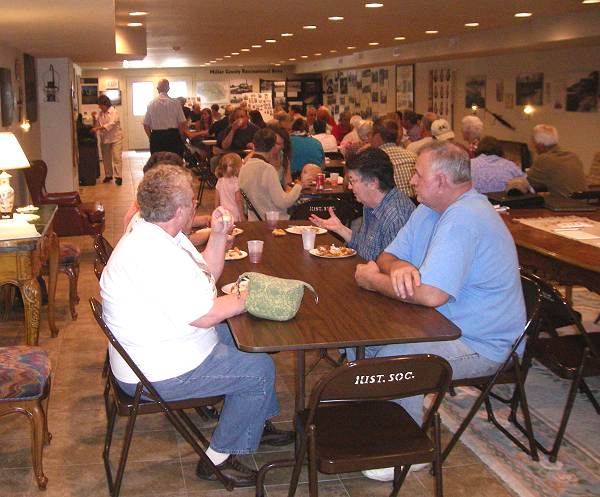
01 Williams Cemetery Meeting
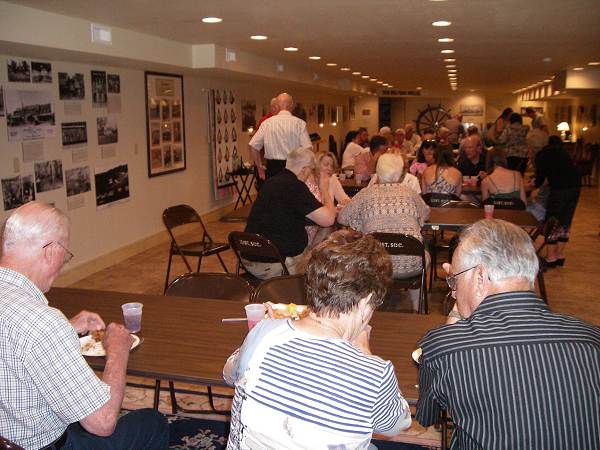
02 Williams Cemetery Meeting
Visitors from both coasts were present for the meeting as well as a pot luck dinner brought by members and served by our museum staff. Iberia native Don Pemberton, who is a great grandson of John Williams Jr., the original Williams to come to Miller County, orally presented a detailed narrative of the history of the Williams Cemetery (photo 03).
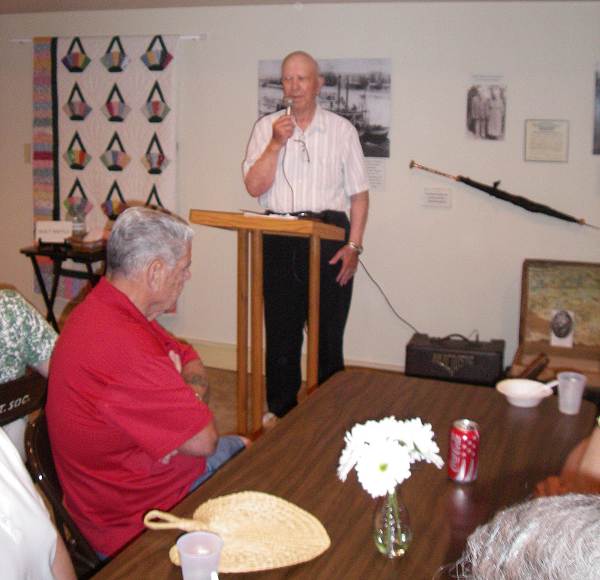
03 Don Pemberton
Don also made available a very complete genealogical discussion of the Williams’ family in his recent book, Williams Cemetery: A Brief History (photo 04).
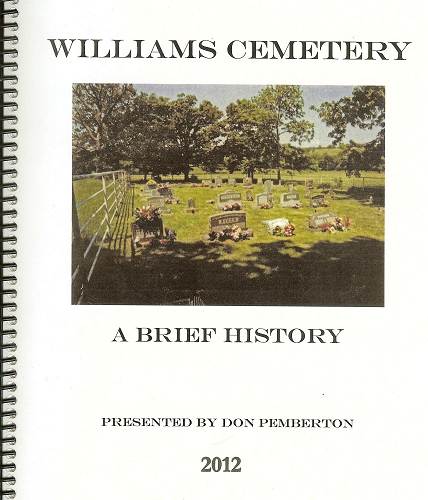
04 Williams Cemetery - A Brief History
I have written in the past a couple of detailed narratives about the John Williams Jr. family which you can review at these two past Progress Notes:
- May 11, 2009
- May 07, 2012
Nancy Thompson also has a short essay about the Williams family at this location on our website.
Another very interesting essay about the Williams family and the Williams Cemetery was written by Andrew J. Pemberton, son of Don Pemberton and great great grandson of John and Mahala Williams which you can read at his website (photo 05).

05 Glyna Nickels and Andy Pemberton
After the Williams Cemetery Association meeting we immediately began the task of preparing the museum for the arrival of the display entitled Divided Loyalties featuring the history of the Civil War in Missouri. The display is being provided us by Greg Olson, Curator of Exhibits and Special Projects at the Missouri State Archives. The showing of the display will begin in early June lasting for about two months. Here is a diagram of what the display includes (photo 06):

06 Civil War Display Floor Plan
Click image for larger view in PDF format
And here is an announcement flyer sent out by the Missouri State Archives (photo 06a):
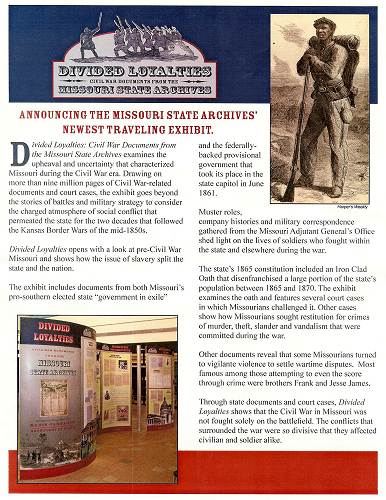
06a Divided Loyalties Traveling Exhibit
Click image for larger view
We are placing the display in the lower level of the new addition. Just this last week we removed all the tables and chairs from this area to make room for the display (photo 07).
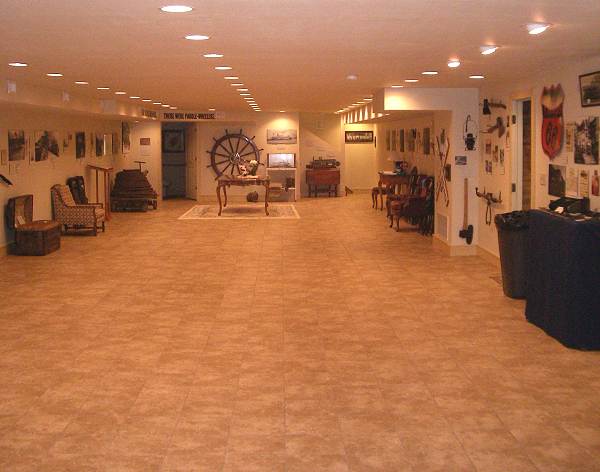
07 Area of Museum reserved for Civil War Display
The Missouri State Archives made available several display units which have been reserved by several organizations around the state. The one reserved for us arrived last Wednesday coming from Bloomfield, Missouri where it had been on display at the Stars and Stripes Museum. This museum is dedicated to preserving the legacy of the Stars and Stripes, the United States Military Newspaper. On November 9, 1861, the newspaper was born on the courthouse square in Bloomfield, Missouri from the idea of ten Union soldiers. You can read more about it at this website.
The Divided Loyalties display was delivered to us by Dr. and Mrs. Nicholas Thiele (photo 07a).
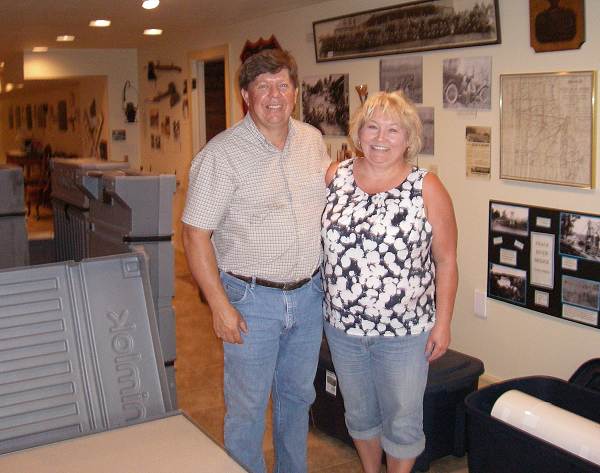
07a Dr. and Mrs. Thiele
Dr. Thiele is superintendent of the Bloomfield R XIV School District of Bloomfield, Missouri. Recently, he was named director of Southeast Missouri State University's regional campus in Malden.
He and I placed all the containers of the display boards on the floor of the lower level of our new addition where we had just removed all the chairs and tables (photo 07b).

07b Display Containers
I am hoping that next week we will have it all in place at which time I will post photographs of the completed display.
This week I will continue the series of articles about the Civil War in Miller County by copying the narrative published by the Goodspeed Company in its book, The History of Miller County. This is one of the earlier historical summaries of the Civil War in Miller County and is somewhat difficult to read due to occasional archaic use of wording and the emphasis on detailing names and places and organizational units. However, the temporal proximity of the narrative to the actual events of the Civil War in Miller County allowed the authors to have many interviews with veterans of the war from our county:
History of Civil War in Miller County
Goodspeed History of Miller County (1889)
p. 552
The military action of Miller territory is confined almost entirely to the events of the Civil War, as no companies were formed in the county for the Mexican War, and but a very few enlisted for that conflict; John (better known as “Cave”) Wilson floated down the Tavern, Osage, Missouri and Mississippi to New Orleans in a canoe, and there joined the Mexican troops.
Mutterings of Civil War
Miller County cast her first presidential vote, in 1840, about 15 to 1 Democratic, but in the next two campaigns (1844 and 1848) there was a falling off to 5 to 1; in 2852 it was 4 to 1, and in 1856 but 2 to 1. The vote of 1860 was about 1 2/3 to 1 against the Union, or 495 for Breckenridge (photo 08), 23 for Lincoln (photo 09), 193 for Bell (Union) (photo 10) and 94 for Douglas (photo 11).

08 John Breckenridge
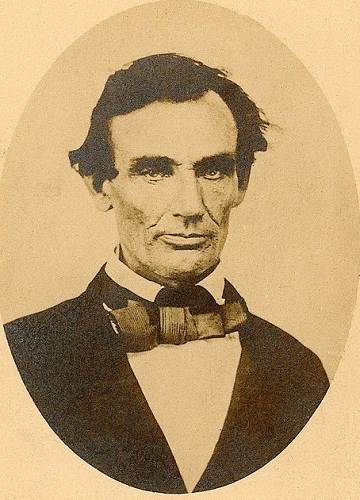
09 Abraham Lincoln
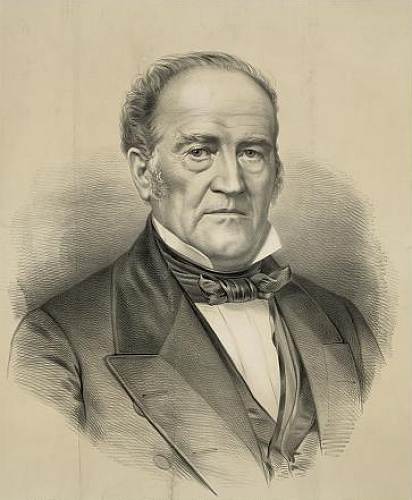
10 John Bell
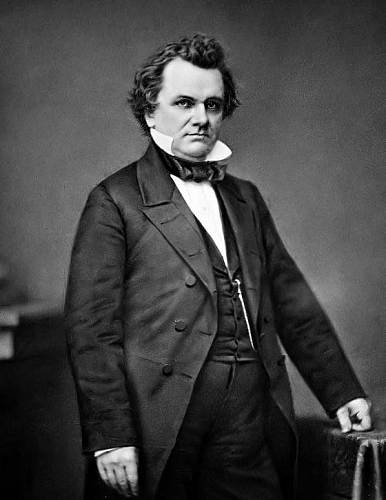
11 Stephen Douglas
The total is 815, but the effective fighting population was about 1,000, for very many were in service under age or reached their majority during the war. Those were days of large families, too.
Among those who voted for Lincoln were Lewis Riley, Mr. Anderson, W. Ponder and P. R. Robinson. There was a large number of slave owners in the county, and these viewed the abolition propagation with alarm; as an illustration of this, the young people who, in their debating societies, had been accustomed to try the negro and Indian abuse questions, were generally forbidden to discuss it any more.
Mass Meetings
The first public meeting was held February 3, 1849, at the court house in Tuscumbia, the result of which was that J.W. Johnston and Robertson Roberts were chosen as a committee to wait upon the county court, praying them that, as the people “have seen with concern and amazement the late abolition movement, which has already occasioned the disruption of the Methodist Episcopal Church,” etc. the court house be forbidden to preachers or speakers who had abolition tendencies; the court granted their prayer. Ten years passed; the one church ever erected in Tuscumbia up to 1889 was, by the disruption of its owners, the Methodists, turned into a grocery and saloon and soon burned.
The crowding of events in 1860 and 1861 was followed in March of the latter year by public discussion during court at Tuscumbia. Frequent meetings were held during the week; Proctor Knott (photo 12) made a strong speech, and Judge Ross, of Versailles was vigorous in defense of the Union; Attorney (afterward General) Parsons (photo 13), sounded the secession alarm.
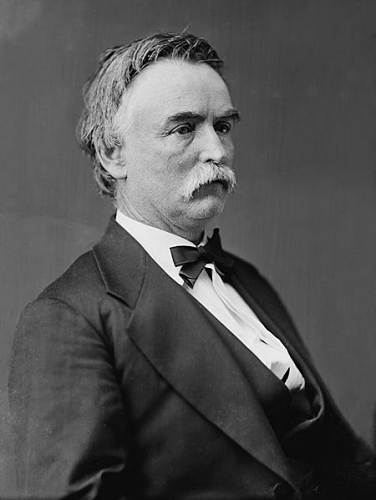
12 Proctor Knott

13 General Parsons
Numerous meetings followed at Tuscumbia, Iberia, Ulman’s Ridge and other places. At Tuscumbia the first rebel flag was hoisted on the tree near Simpson’s store. Delegates were elected to the convention at Jefferson: Proctor Knott, J.W. McClurg and Senator Thomas Scott…the last mentioned a citizen of Miller (photos 14 and 15).
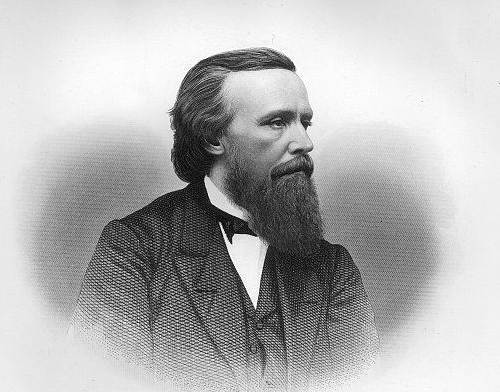
14 Joseph Washington McClurg

15 Thomas Scott
At the various meetings held from that time on there were among the chief Union agitators and speakers of the county, John K. Hall, William Hawkins (photo 16), W.H. Payne, Tolbert Bass, Reverend Jacob Capps (Baptist), Reverend T.J. Babcoke (Methodist); and among the State rights speakers were Wilson Lenox, Reverend W. McCubbin, Peter Taylor and E.B. Farley.

16 William Hawkins
Soon after the fall of Camp Jackson, Miles Vernon, of Laclede County, began stumping the county at Ulman’s Ridge, where he showed up in lurid colors the robbery, murdering, ravishing, pillaging and burning with which the “Dutch” would soon be suffering in Miller County (photo 17).
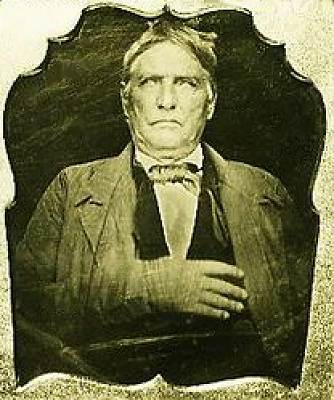
17 Miles Vernon
It frightened many people into a Home Guard movement, which many favored in the excitement of the moment, not knowing that it had any purpose but to protect the homes of Miller County from any who attempted to molest them.
Note: See this website for a fascinating story about Miles Vernon.
Another similar meeting was held at Iberia. Companies were formed at both places and as the drilling proceeded from time to time it was seen by some that this movement was not a vigorous Union movement, and as they did not enter it, they were told to “go in or leave the county.” W. H. Payne and T. B. Robinson (photo 18) were among those who received this hint, and late in May they worked up a call for a mass meeting, a half mile east of Brumley, at Camp Union.
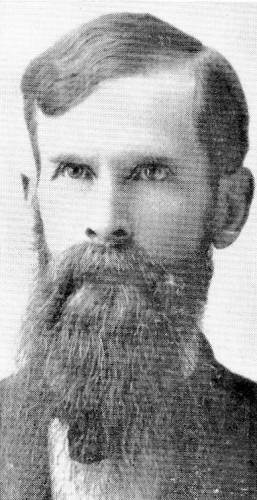
18 Theodore Robinson
It was well attended, and J. W. McClurg and others, in rousing speeches, urged the people to Union organization, where upon the nuclei of four companies were made. Incidentally, it may be mentioned that the flag used at Camp Union was made by the young ladies of the Hawkins and Robinson families, by tearing up dresses. This was the first national flag ever seen by some of the young men who had even reached their majority. Peter Singleton Wilkes was active at first in secession affairs, and went off with Governor Jackson and became a member of the Confederate Congress and the army (photo 19).

19 Governor Jackson
At one time at Tuscumbia, at the ferry landing, the rebel flag floated on the left and the national flag on the right.
Military Movements in the County
The first organization was the doubtful company at Ulman’s Ridge, formed under the direction of Reverend William McCubbin.
Among the companies organized during 1861 which were of the States rights sympathies were Captain Abraham Castleman’s at Iberia, and his lieutenant, Jesse W. Burks, east of Iberia; W. R. Wright, west of Iberia (photo 20), and Captain James Johnson at Tuscumbia.
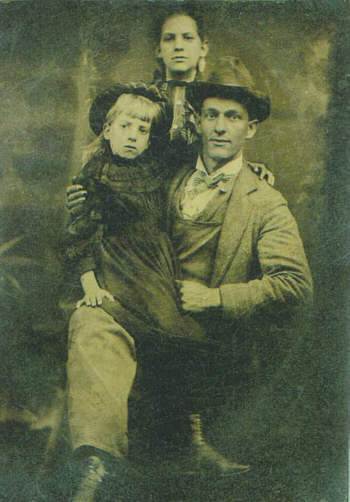
20 William Rankin Wright and wife Lucy Moon
The Union companies organized at Camp Union in May were: Company K, under Captain J.W. Canada; Company E. Captain C.D. Martin; Company D, Captain Benjamin Jeffers; Company G, Captain W.A. Bradshaw. On June 10, at Camp Union, other companies met them, and McClurg’s Osage Regiment was organized with the following officers: Colonel J.W. McClurg, Lieutenant Colonel Emly Golden, Majors J.K. Hall and….. Kitchen. Golden and Hall were Miller citizens. The regiment was armed with pistols, knives, rifles, shot guns and any other weapon obtainable. Meanwhile Governor Jackson’s powder had been largely secreted throughout Miller County at the time of the great fright at the capital; and the Osage Regiment made it a point to secure as much of it as possible. This caused many minor skirmishes. The powder was found piled up in the courthouse where a small iron cannon was also secured, and planted at Camp Union to give explosive expression to enthusiasm there (photo 21).
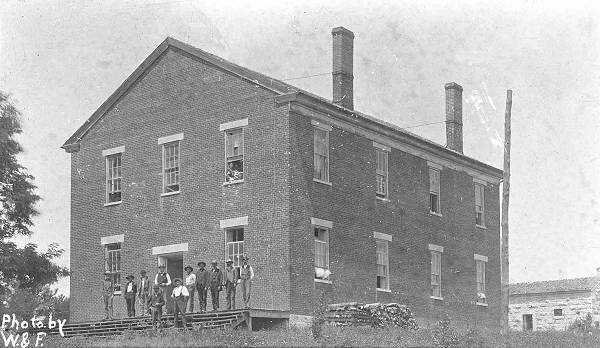
21 Old 1857 Courthouse
Powder was also found in houses, barns cellars and caves, and it is a well vouched for fact that even to this day an occasional Miller County shot gun is loaded with Claiborn Jackson’s ammunition.
Two Union companies organized north of the river, not in the McClurg regiment, were Captain Jacob Capps’, Captain Rice’s, and Captain T.J. Babcoke’s, which joined the Cole County forces.
In December, 1861, Colonel McClurg’s regiment was ordered to Jefferson City and mustered out; many went into the regular service.
In 1862, many of the more vigorous on both sides had gone into the regular service, and Captain Emly Golden and Tolbert Bass were made enrolling officers for the Enrolled Militia on the south and north sides of the river, respectively. Captain Golden, however, recruited a company, and went into the Thirty third Missouri Volunteer Infantry, and Mr. Bass enrolled the north side and a few on the south. The Enrolled Militia continued organized during the war; the captains were: Joseph Goodman, Sayles Brown, William Long, James Long, T.J. Babcoke and A.J. green. These were united with men from other counties to form the Forty second Enrolled Militia, of which Colonels Thomas Crawford, (General) Frank Hickox and….. Flesh had command.
The years 1862, 1863 and most of 1864 passed off with an immense amount of petty skirmishing and bushwhacking, guarding and guiding, and almost continuous militia service of a severe character. During 1864 a squad of militia were surprised on Curtman Island, in the Osage River, by the guerilla Crabtree, who rendezvoused in a cave on the Tavern Creek, and seven men were butchered: Yancy Roark, F. B. Long, Nathaniel Hicks, Richard Crisp, S. McClure, W. Gibson and John Stirling. In October, 1864, Price’s army cut a broad swath across the north part of Miller County, pillaging as they went. A stray squad of them were captured by Captain Babcoke about fifteen miles east of Tuscumbia. These were the chief events until the close of the war.
Organizations
It has been estimated that about 1,000 men from Miller County took some part in the war, and of these nearly 700 took an active Federal part in militia or regular troops, and about 300 were of the Southern troops, or “bushwhacking” and State Guard companies. The Southern troops were mostly with General Parsons.
The early temporary organizations have been given. The Forty Second Enrolled Missouri Militia had the most of the Enrolled Militia, although the Forty seventh had some at times. The first officers were: Colonel Thomas Crawford (later John Pound), Lieutenant Colonel H.L. Bruns, Major J.W. Legg (later J. L. Rush), Lieutenant Colonel H.L. Bruns, Major J. W. Legg (later J. L. Rush), Adjutant G. Vogler, quartermaster John Walde, Surgeon Bernard Bruns; Company B, Captain A.D. Green, First Lieutenant L. Bacon, Second Lieutenant J. Enloe, Jr.; Company C, Captain Joseph Goodman, First Lieutenant J.L. Wright, Second Lieutenant T.J. Babcoke; Company D, Captain W. Long, First Lieutenant T. Spearman, Second Lieutenant N.B. Wood. In the Forty seventh, Captain Sayles Brown, of Company I had First Lieutenant W.C. Brumley and Second Lieutenant Henry Bear (photo 22).
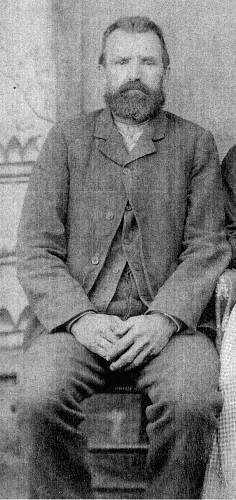
22 Henry Bear
Miller County men were chiefly in the Sixth Missouri Cavalry, the Thirty third, Forty eighth and Twenty sixth Missouri Volunteer Infantry regiments.
The Sixth Cavalry, Missouri Volunteers, had Colonel Clark Wright, Lieutenant Colonels S.N. Wood, T.A. Switzler, Majors H.P. Hawkins, B. and S. Montgomery, Adjutants F.J. Cole, M.T. Kirk, and D.E. Saunders and Quartermasters H.N. Stinson, and S.M. Wood; Company H, Captains F.J. Hoper and E. M. Morris, First Lieutenants C.D. Martin and J.B. Salsman, and Third Lieutenant W. Hawkins; Company I, Captains T.J. Spelman and H.H. Rottaken, First Lieutenants E.M. Morris, Rottaken and John DeWitt, Second Lieutenants M.C. Chapman, H. Rottaken, S.R. Woodworth and W.M. Niece; Company K, Captain J. C. DeGress, First Lieutenants F.M. Cole and W.A. Hackney, Second Lieutenants Hackney and R.H. Ryal. This regiment was made up of independent companies at Rolla, February 14, 1862, and served in the Southwest, in Missouri, Arkansas, then to Helena, Chicksaw Bayou, Arkansas Post, Greenville, Mississippi, grand Gulf to Jackson, Champion’s Hill, black river, and Bridgeport, Vicksburg, New Orleans, Morganza Bend, in the advance upon Opelousas and in the Gulf Department until the muster out on September 12, 1865. “They have shown themselves compeers and fit companions-in-arms with brave sons of sister States,” says General McClernand (photo 23).
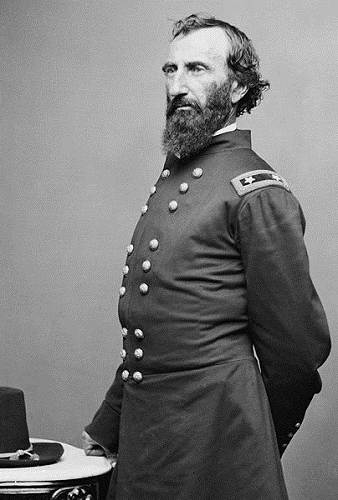
23 John Alexander McClernand
The Thirty Third Missouri Volunteer Infantry had Colonels C.B. Fisk, W.A. Pyle and W.H. Heath, Lieutenant Colonels Pyle, Heath and W.J. McKee, Majors Heath, G.W. Van Beck, McKee and A. J. Campbell, Adjutants G. A. Holloway, E.S. Day and C.L. Draper; Company E, Captain Emly Golden, T.M. Gibson and H. Cochran, First Lieutenants J.G. Patton, C.L. Draper, E. L. Allen and I.A. Balsh, Second Lieutenants R.M. Reed and F.E. Lombar. This was the “Merchants’ Regiment” of St. Louis, which was ordered into the field September 22, 1862, and mustered out August 120, 1865, at Vicksburg. They operated in Missouri, “The Yazoo Pass expedition,” Helena, at Prices siege, Meridian (Mississippi), Red River expedition, Pleasant Hill (La.), Marks ille (La.), Bayou de Glaize, Old river Lake (Ark), against Lee and Forrest in Mississippi, Tupelo, Memphis, Oxford, Brownsville (Ark.), Cape Girardeau (Mo.), against Price, and in garrison at California and Tipton (Mo.) to St. Louis and to Nashville (Tenn.) and Vicksburg.
In the Forty-eighth Missouri Volunteer Infantry were Colonel W. H. Blodgett, Lieutenant Colonels Blodgett and E. Kirby, Majors Kirby and L.P. Miller, Adjutant A.M. Dickson; Company A. Captains W. Wilson and D.E. Davis, First Lieutenants Davis and S. Bartlett, Second Lieutenants Bartlett and A. J. Lawrence; Company B, Captain T.J. Hart, First Lieutenant W.T. Franklin, Second Lieutenant A.J. Sannier; Company E, Captain D. Rice, First Lieutenant F. W. Tallman, Second Lieutenant J. P. Rice. This regiment was organized November 22, 1864, at Rolla, and mustered out June 29, 1865. They served at Benton Barracks, Cairo, Nashville Columbia (Tennessee), Chicago (Illinois). They were on detailed duty generally.
For a sketch of the Twenty Sixth Missouri Volunteer Infantry the reader is referred to the Osage County division of this work.
Reconstruction
This period was passed with its registration, oaths of loyalty, returns of soldier citizens of both sides, more or less, etc., with comparative quiet. The negroes located as farmers, for the most part, in Richwood, Saline and Franklin townships, although some entered the Federal service and never returned. The vote of 1864 was 555 for Lincoln and 111 for McClellan.
Recently, I was contacted by an author from New York City named Andrew Lilley who had found on one of my Progress Notes a photo of some early Eldon baseball players which I had copied from Tina Raynor’s book; Eldon, A Look To The Past. He wondered if I could obtain for him the original photo; however; this was a difficult task, for sure. I wasn’t able to reach Tina but her mother told me the original photos were only borrowed for copying and then promptly returned to their owners. Since the book was written in 1982 many of those who had the photos would by now be deceased or difficult to find. However, since this is baseball season I thought some readers might want to see this representative collection of old baseball photos which were copied from several sources including Tina’s book as well as the collections of Mike Wieneman and Bob Richardson (photos 24 - 29).

24 Eldon Boys Team
Click image for larger view
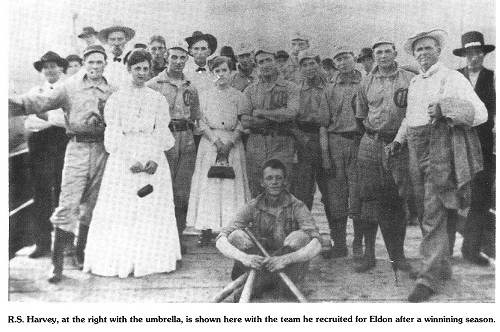
25 Eldon Men's Team
Click image for larger view
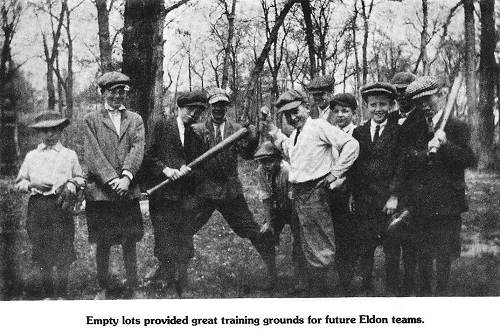
26 Eldon Boys ready to learn Baseball
Click image for larger view
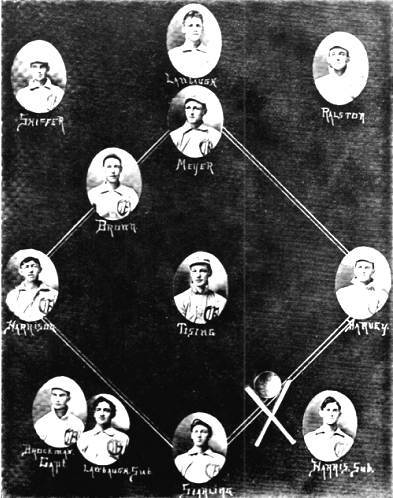
27 Best Eldon Team
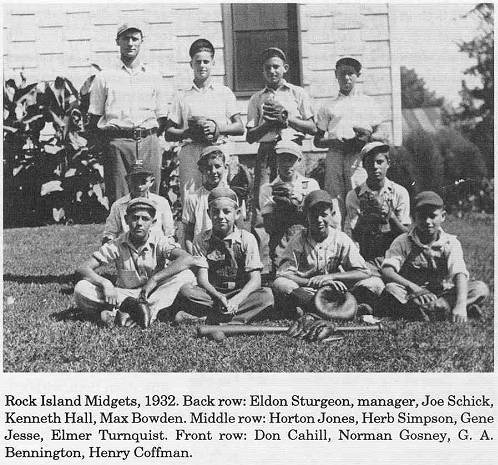
28 Rock Island Midgets
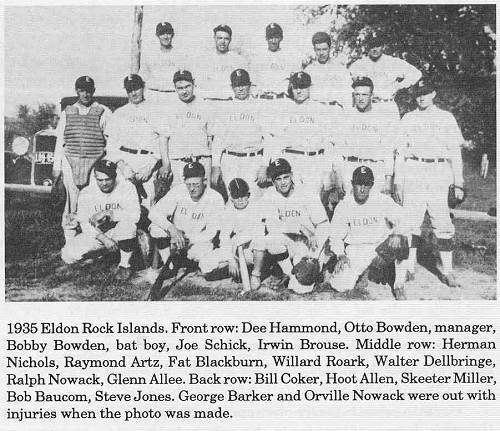
29 Rock Island Men's Team
Here is the short story Tina wrote to accompany these photos (photo 30):
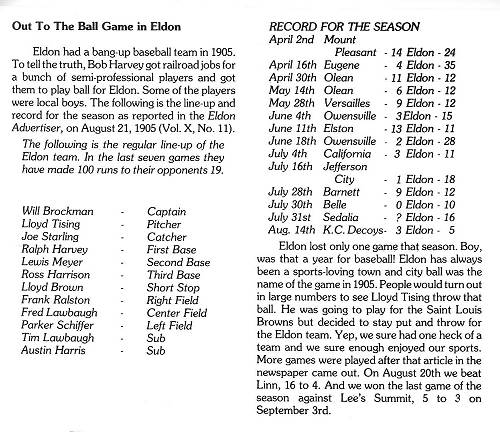
30 Early Eldon Baseball
Click image for larger view
The article from which these photos were obtained has a very interesting narrative which I would recommend you take the time to read at this previous Progress Notes.
Recently, this announcement below was placed in the News Tribune newspaper of Jefferson City:
“The Missouri Department of Transportation will close several miles of Missouri 17 near Tuscumbia while both the Saline Creek and Dog Creek bridges are replaced later this year.
MoDOT engineer Bob Lynch received word last week that three bridge projects in Miller County are scheduled for completion during the upcoming construction season.
Work on the projects, including the aging bridges over Saline Creek, Dog Creek and Humphrey Creek, will begin in early April and run through the construction season.
MoDOT officials have decided to temporarily close a portion of Missouri 17 near Tuscumbia and handle both bridge replacements at the same time. Because one project will take several weeks longer than the other, the section of Missouri 17 over Dog Creek should reopen long before the second project is finished.
The two bridges span two separate waterways within a few miles of each other, just outside Tuscumbia, the county seat of Miller County. Because both projects are scheduled for this year and both are at different locations along Missouri 17, but within a few miles of each other, last summer MoDOT engineers asked Miller County Presiding Commissioner Tom Wright to “get a feel” about how county residents felt about doing both projects at the same time.”
At the time of this writing the construction has already started over Dog Creek on Highway 17. We are trying to decide from Tuscumbia whether to take the state recommended route or in place of that take the Highway 52 route east toward St. Elizabeth, turn right on Crow Road, and then turn right again on Mt. Zion Road which takes you back to Highway 17 going south to Iberia.
Soon, construction will begin on the Saline Creek bridge northeast of Tuscumbia and another detour will be necessary. I think most people will take Catfish Road off of Highway 52 north of Tuscumbia to the northeast, turn right on Woods Road and right again on Saline Road to join Highway 17 going north to Eugene.
Here are some recent photos of the bridge (photos 31 and 32):
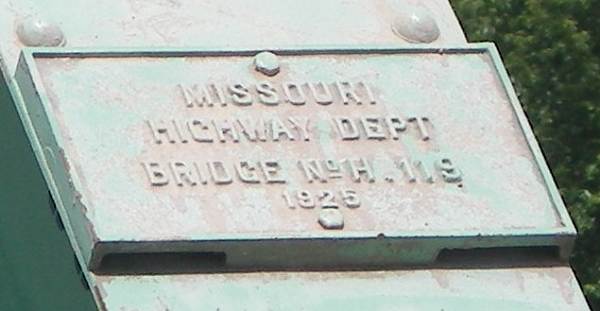
31 Sign on Bridge
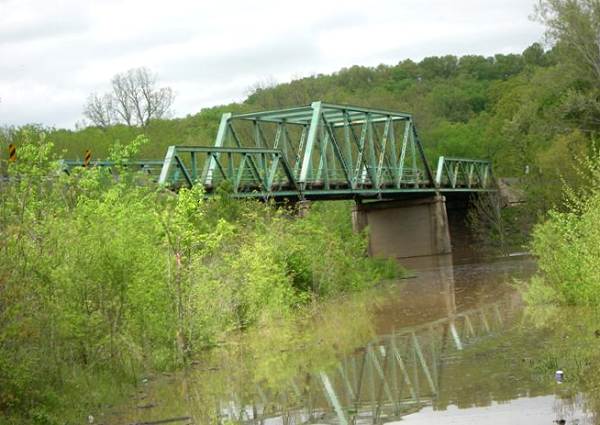
32 Saline Creek Bridge
In this next photo you can see the crumbling of the pavement along the edges (photo 33):
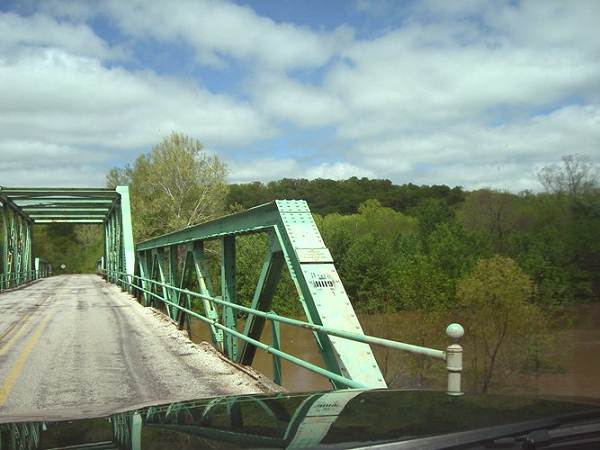
33 Crumbling at the Edges
I was given some old photos of the construction of the current Saline Creek bridge taken back in 1925 by Tuscumbia native Roy Smith. Roy’s grandson, Ray Dean Smith, let me copy them (photos 34 - 40).
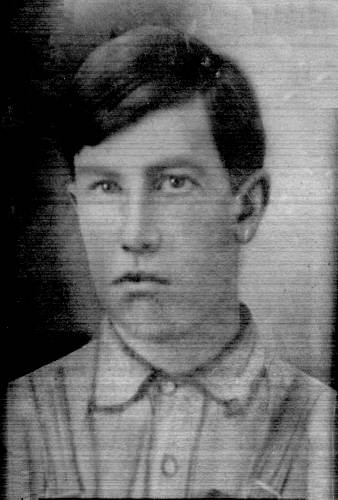
34 Roy Edgar Smith

35 Saline Bridge
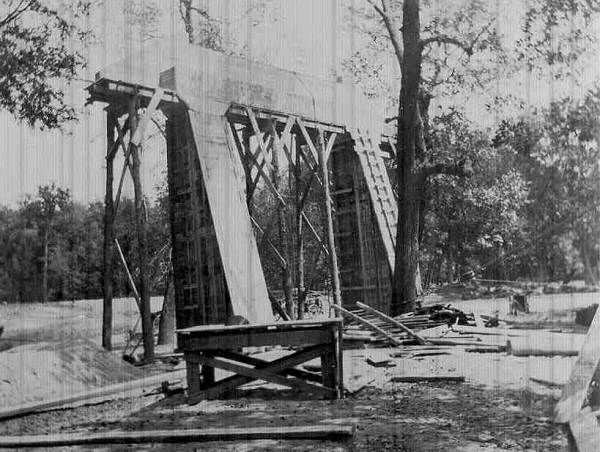
36 Saline Bridge
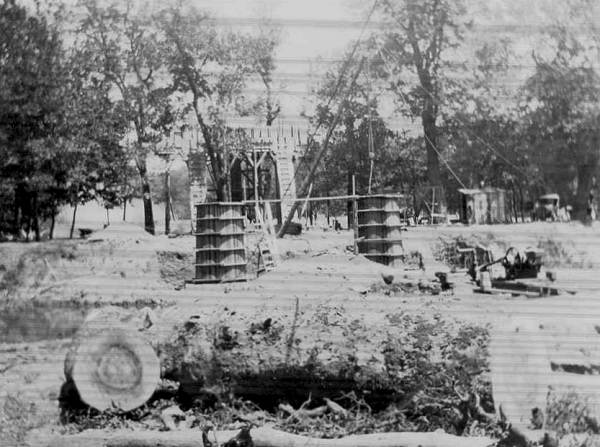
37 Saline Bridge
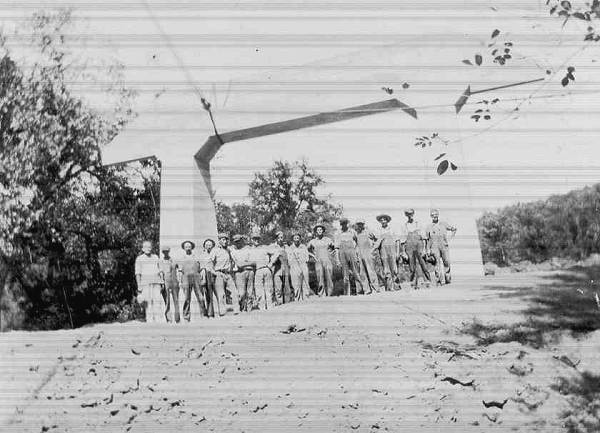
38 Saline Bridge
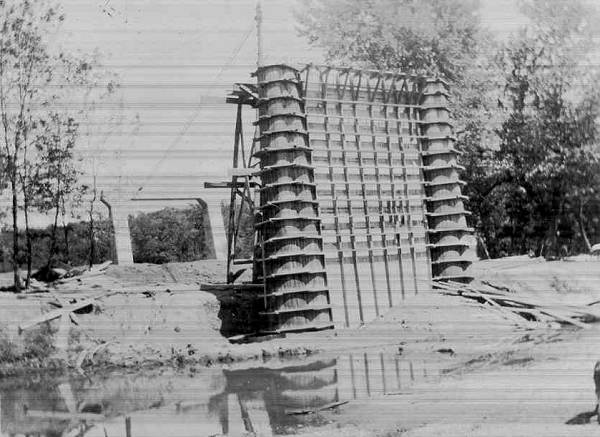
39 Saline Bridge

40 Saline Bridge
I have access to a resource which tabulates daily the number of “hits” our Miller County Museum website receives. Since we put the website up in April of 2007 we have had well over 50,000 unique “hits.” One of the interesting things to me is that although most readers are from the continental USA we usually have one or two or more from around the world. Here is a copy of a recent regional map of the locations of some of our readers around the world (photo 41):
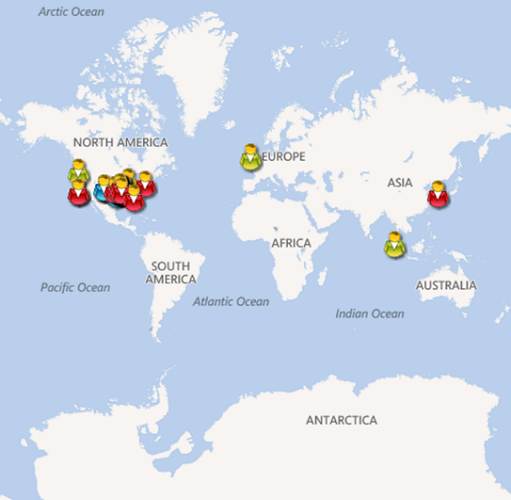
41 Website World Distribution
This is a dynamic photo recording and changes frequently during the day as more readers click on to the site.
That’s all for this week.
 Joe Pryor
Previous article links are in a dropdown menu at the top of all of the pages.
|

